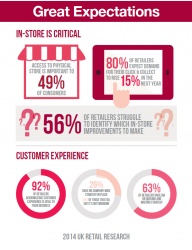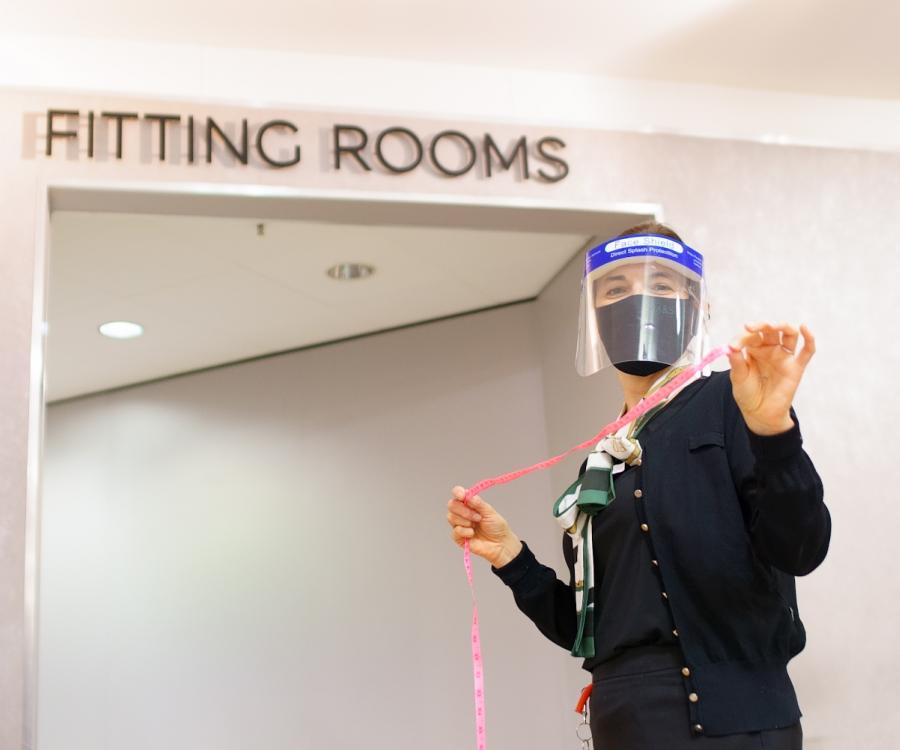Consumers confirm they’re being let down when it comes to experiencing a consistent, positive and true to brand value experience across the multitude of channels available to them. In a thought leadership and research report commissioned by Qmatic and entitled “Great Expectations” Vanson Bourne, a specialist technology market research company, has revealed that there is a disconnect between how retailers rate their performance and customer perceptions of actual service delivery.
In an in-depth survey of online and offline channels undertaken with 100 UK retail decision makers and 500 consumers, Vanson Bourne found that, while retailers believe that overall they’re performing well - with 82% stating their organisation provides a good or extremely good customer experience - 72% of consumers confirmed they’ve encountered inconsistencies in their customer experience when using a retailer’s online and in-store channels.
“Despite the booming adoption of eCommerce by consumers, the physical store’s role is more important than ever before. Customers now have the power to choose how and when they shop - be it online, mobile, catalogue or via a call centre,” commented Steve Williams, Managing Director, Qmatic UK. “Clearly customer experience in the physical store is becoming ever more pivotal to overall brand perceptions and purchasing behaviours. Getting it wrong risks contamination across all channels – and ultimately leads to less engaged and less loyal customers.”
Indeed, in the last 12 months around 31% of consumers confirmed that they had abandoned purchasing from a retailer because of a poor customer experience.
When it comes to taking the shine off their shopping experience, the greatest number of frustrations for consumers related to a less than satisfactory in-store experience:
- 59% rated long queues in store as one of their most annoying shopping frustrations
- 21% disliked unfair queuing scenarios – citing people pushing in and not getting served in turn as being typical aspects they encounter
- 18% found it frustrating not being able to find key service desks and points such as tills, returns, click and collect, when in-store.
The results of the study have revealed that, when it comes to improving the management of queuing and waiting for customers shopping in-store, 62% of retailers do not have a buffered queuing solution in place and just 42% have invested in self-service kiosks to allow customers to identify themselves and their need and to self-check in. That’s despite the fact that retailers acknowledge improving this aspect of customer service delivery would generate increased customer satisfaction and higher sales.
Keeping customers happy and engaged as they queue
While the facts demonstrate that many of the retailers surveyed would benefit from a more strategic approach to their queue management systems, when it comes to keeping customers positively engaged as they queue and wait, evidence suggests that they recognise the need to keep customers happy and engaged as they queue. In fact, 43% of respondents are utilising media screens to inform consumers of the current wait time or communicate promotions and offers to enhance the wait experience, while 42% of retailers are using technology to actively deliver information useful to customers as they queue in waiting areas. A further 11% of retailers are working with technologies that compensate customers as they wait in line with rewards.
To generate incremental sales engagement opportunities and capture attention as customers queue, 35% of retailers are actively employing digital signage and media technologies to undertake advertising messaging in a bid to influence consumer buying behaviours and push up in-store dwell times.
“Retailers are investing heavily in new technology including social commerce,” continued Williams. “The appeal of getting involved with the most current social trend because it’s ‘cool’ or because competitors have done it is understandable, however we would strongly advise against leaving the customer out of the equation when it comes to ensuring that once in-store they encounter a superlative service experience at the tills or any other service point. For example, self-service kiosks offer customers the option to leave their mobile phone number and browse the store – hence increasing their potential to buy more - while awaiting an SMS alert that their item is ready for collection/store assistant is available.”
“In addition, ‘Voice of the Customer’ (VoC) technologies allow customers to evaluate their experience while in-store generating valuable continuous feedback on customer satisfaction and virtual queuing systems alert staff when customers are waiting and seeking help. These technologies empower customers with a feeling that that they have not been forgotten; ensuring that they are known, valued and being treated fairly,” Williams concluded.
Download the “Great Expectations” report here.
Source: Qmatic UK










